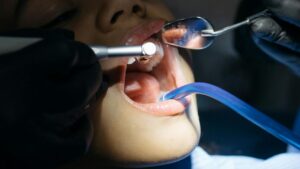The worst day of pain after wisdom tooth extraction can feel brutal — but you’re not alone, and you’re not helpless. Whether it’s Day 2 or Day 3 post-op, this peak in discomfort is entirely normal and expected. However, with the right strategy, you can ease your symptoms and get through the hardest part of your recovery with less stress.
In this comprehensive guide, we’ll share top dentist-approved tips to help you manage and survive the worst day of pain after your wisdom teeth removal. From medication timing to food choices, everything you need is covered here.
💬 Remember: It’s very common for pain to peak around 48 to 72 hours after extraction. The worst pain doesn’t always happen right away — but there’s a lot you can do to stay ahead of it.
- Why the Pain Gets Worse Before It Gets Better
- 1. Take Medication on a Strict Schedule (Don’t Wait for the Pain)
- 2. Use Ice Packs — But Only for the First 48 Hours
- 3. Follow a Soft, Cold, and Non-Irritating Diet
- 4. Elevate Your Head When Sleeping
- 5. Start Salt Water Rinses on Day 2
- 6. Don’t Overdo It — Rest Is Crucial
- 7. Keep the Area Clean — But Gently
- 8. Recognize the Signs of a Complication
- 9. Use Prescribed Antibiotics If Given
- 10. Track Your Progress and Be Patient
- Emotional Support: It’s Okay to Feel Frustrated
- Recap: What to Do on the Worst Day of Pain After Wisdom Tooth Extraction
- FAQs
- Final Thoughts
Why the Pain Gets Worse Before It Gets Better
If you’re wondering why things hurt more a day or two after the procedure, here’s the breakdown:
- Inflammation Peaks Late: Swelling and bruising increase over the first 48–72 hours before subsiding.
- Anesthesia Wears Off: The numbness from the procedure fades, revealing more intense sensations.
- Body’s Healing Response: As your immune system works to heal the area, the pressure and tissue sensitivity increase.
- Clot Sensitivity: The newly formed blood clot protecting the socket is vulnerable and can be easily irritated.
This is why Day 2 and Day 3 are often the worst days of pain after wisdom tooth extraction.
1. Take Medication on a Strict Schedule (Don’t Wait for the Pain)
Tip #1: Stay ahead of the pain by following your medication schedule to the minute.
One of the biggest mistakes people make is waiting until the pain flares up to take medication. Painkillers — whether they’re prescription or over-the-counter like ibuprofen (Advil) or acetaminophen (Tylenol) — are most effective when taken consistently.
Suggested Pain Management Routine:
- Ibuprofen 400–600 mg every 6 hours (if advised)
- Acetaminophen 500–650 mg every 6 hours, alternating with ibuprofen
- Avoid taking both medications together unless instructed by your dentist
📱 Pro Tip: Use a medication-tracking app or phone alarms to stay on schedule. It really helps during groggy post-op days.
2. Use Ice Packs — But Only for the First 48 Hours
Applying cold compresses to the outside of your jaw reduces swelling and numbs the area, offering natural pain relief.
Cold Compress Schedule:
- Apply for 20 minutes on, 20 minutes off
- Continue this rotation during waking hours for the first 2 days
- Always use a cloth or towel between the ice pack and your skin
3. Follow a Soft, Cold, and Non-Irritating Diet
What you eat can either help or hurt your healing. On the worst day of pain, avoid anything that requires chewing, is too hot, or could get lodged in the wound.
Best Foods to Eat:
- Applesauce
- Smoothies (spoon only — never a straw)
- Cold mashed potatoes
- Greek yogurt
- Cold soup or broths
- Scrambled eggs (cooled down)
Foods to Avoid:
- Crunchy snacks (chips, nuts, popcorn)
- Sticky foods (caramel, chewy candies)
- Acidic or spicy items
- Hot beverages or soups
- Alcohol or carbonated drinks
⚠️ Note: Using a straw, smoking, or sipping carbonated drinks can cause dry socket — an extremely painful condition where the blood clot is dislodged.
4. Elevate Your Head When Sleeping
Sleeping flat increases blood pressure in the head and jaw, which can worsen swelling and pain.
How to Sleep Better:
- Use an extra pillow to elevate your head
- Avoid sleeping on your side, especially the side of the extraction
- Try sleeping in a recliner if needed
This one simple trick can significantly reduce overnight discomfort during the worst recovery days.
5. Start Salt Water Rinses on Day 2
Starting gentle saltwater rinses after the first 24 hours helps clean the wound and reduce bacterial growth.
Salt Rinse Formula:
- Mix 1/2 teaspoon of salt in 8 oz (1 cup) of warm water
- Gently swish (don’t gargle or spit forcefully)
- Do this 2–3 times daily, especially after eating
Avoid commercial mouthwashes unless prescribed, as they may contain alcohol or ingredients that irritate the surgical site.
6. Don’t Overdo It — Rest Is Crucial
Even if you’re feeling a bit better, resist the temptation to be active. Strenuous activity can increase blood pressure and lead to more pain, bleeding, or even reopening the wound.
Resting Tips:
- Take at least 2 full days off work or school
- Limit talking, chewing, and jaw movement
- Avoid exercise for the first 4–5 days
Healing is fastest when your body has the chance to focus all its energy on recovery.
7. Keep the Area Clean — But Gently
On the worst day of pain, food particles can easily become trapped, which increases the risk of infection.
- Avoid brushing directly over the extraction site for the first few days
- Rinse with water after meals
- Resume light brushing around surrounding teeth, but move slowly and cautiously
8. Recognize the Signs of a Complication
While pain is expected, some signs may indicate something more serious, such as infection or dry socket.
Contact Your Dentist Immediately If You Experience:
- Sharp, radiating pain not relieved by medication
- Bad breath or foul taste in your mouth
- Pus, bleeding, or unusual discharge
- Fever over 100.4°F
- Visible bone in the socket
- Pain that gets worse after Day 3 instead of better
According to guidance from the American Dental Association, post-op complications are rare but require prompt attention when they occur.
9. Use Prescribed Antibiotics If Given
If your oral surgeon prescribed antibiotics, finish the entire course — even if you start feeling better. These medications help prevent infection and are crucial in certain high-risk cases (impacted teeth, bone exposure, etc.).
10. Track Your Progress and Be Patient
Healing is not instant. Most people feel significant relief by Day 4 or 5, and full healing may take 2–3 weeks. Keep a simple pain log to track how things are improving daily.
Emotional Support: It’s Okay to Feel Frustrated
Let’s be honest — dental pain can impact your mood, appetite, and sleep. Feeling irritable, anxious, or just worn out is entirely normal during this phase. Remind yourself:
- This is temporary
- Your body is doing its job
- Each day from here gets better
🧘 Mental Health Tip: Listening to calming music or watching light-hearted shows can help distract from pain. Deep breathing and mindfulness techniques work, too.
Recap: What to Do on the Worst Day of Pain After Wisdom Tooth Extraction
✅ Do:
- Take pain meds on time
- Apply cold compresses
- Stick to soft, cold foods
- Get plenty of rest
- Start gentle rinses on Day 2
❌ Don’t:
- Skip medication doses
- Use straws or smoke
- Eat hard, spicy, or hot foods
- Sleep flat
- Ignore severe symptoms
FAQs
What day is the most painful after wisdom tooth extraction?
Most patients experience the worst pain between Day 2 and Day 3 after wisdom tooth extraction. This is when inflammation, swelling, and jaw stiffness peak due to the body’s natural healing response. Pain usually starts to subside after Day 4 with proper care.
How long does the worst pain last after wisdom teeth removal?
The most intense discomfort typically lasts 24 to 48 hours during the second or third day post-op. However, mild to moderate pain can continue for up to 7 days depending on the complexity of the extraction and individual healing. Using painkillers and following post-surgical instructions helps shorten the duration.
What helps with unbearable pain after wisdom tooth extraction?
To manage unbearable pain after wisdom teeth removal, follow a strict medication schedule (ibuprofen and acetaminophen), apply cold compresses, elevate your head while resting, and eat soft, cold foods. Contact your dentist if pain becomes sharp, radiating, or worsens after Day 3 — it may signal dry socket or infection.
Is it normal for pain to get worse 2 days after tooth extraction?
Yes, it is completely normal for the pain to increase around 48 hours after extraction. This marks the peak of inflammation and swelling, especially with impacted wisdom teeth. As long as the pain gradually improves by Day 4 or 5, it’s a normal part of healing.
When should I worry about pain after wisdom tooth extraction?
You should contact your dentist if you experience increasing pain after Day 3, severe throbbing, bad breath, pus, fever, or see bone exposed in the socket. These are signs of complications like dry socket or infection and require immediate treatment.
Final Thoughts
Experiencing the worst day of pain after wisdom tooth extraction can be physically and emotionally exhausting, but it’s also one of the most predictable parts of healing. With smart pain management, the right foods, and self-care, you can take control of the discomfort and minimize your recovery time.
Remember: The worst day is just that — one day. After this, it almost always gets better.
Disclaimer: The content provided in this article is for educational and informational purposes only. It does not substitute professional medical advice, diagnosis, or treatment. For guidance specific to your dental condition or recovery, please consult your dentist, oral surgeon, or licensed healthcare provider.










0 Comments